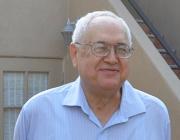Date Published:
APR 14Abstract:
A combination of experimental, molecular dynamics, and kinetics modeling studies is applied to a system of concentrated aqueous sodium chloride particles suspended in air at room temperature with ozone. irradiated at 254 nanometers to generate hydroxyl radicals. Measurements of the observed gaseous molecular chlorine product are explainable only if reactions at the air-water interface are dominant. Molecular dynamics simulations show the availability of substantial amounts of chloride ions for reaction at the interface, and quantum chemical calculations predict that in the gas phase chloride ions will strongly attract hydroxl radicals. Model extrapolation to the marine boundary Layer yields daytime chlorine atom concentrations that are in good agreement with estimates based on field measurements of the decay of selected organics over the Southern Ocean and the North Atlantic. Thus, ion-enhanced interactions with gases at aqueous interfaces may play a more generalized and important role in the chemistry of concentrated inorganic salt solutions than was previously recognized.
